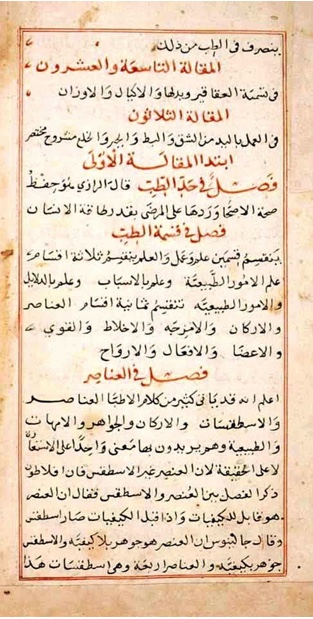Outstanding Surgeons of Medieval Islam
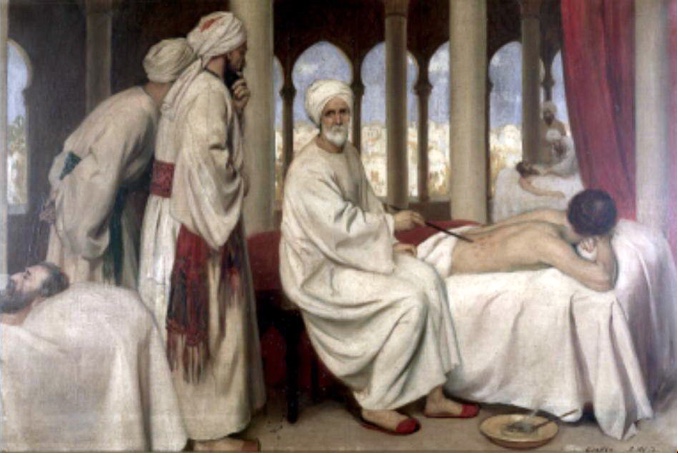
Outstanding Surgeons of Medieval Islam
By Zakaria Virk, Toronto
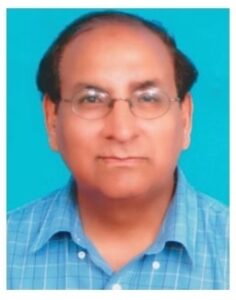 How Early Islamic Science Advanced Medicine
How Early Islamic Science Advanced Medicine
“Muslim achievements in surgery are all the more remarkable in view of the general religious disapproval of the dissection of the human body. The most important surgical texts were Written by a 10th to 11th-century Andulasian, Abul Qasim al-Zahrawi, known in the West as Abulcasis. His Kitab al-Tasrif, a medical encyclopedia contained three major surgical treatises which translated into Latin, were used in Muslim and European medical schools for several centuries. The texts included al-Zahrawi’s designs for about two hundred instruments, in addition to original and useful observations concerning topics ranging from surgical manipulations and technologies to cauterization, treatment of wounds, obstetrics, fracture, dislocation, paralysis, artificial teeth, and mouth hygiene. Al-Zahrawi’s 12th century fellow Andalusian, Ibn Zuhr, known as Avenzoar, was another of great physicians… his works especially those on anatomy had considerable influence on medical practice in medieval Europe.“
(Turner, Science in Medieval Islam, page 138)
Surgeons:
- Zakariya Yuhanna Ibn Masawayh(777-857)
- Ali ibn Sahl Rabban al-Tabari. (810-855)
- Muhammad bin Sa’id al-Tamimi,
- Ali ibn al-‘Abbas al-Majusi. (925-994)
- Muhammad ibn Zakariya al-Razi (865-925)
- Abu-Ali al-Husayn ibn Abdullah ibn-Sina (980-1037),
- al-Zahrawi (936-1013)
- Ibn al-Quff,
- Ibn Nafis (1210-1288)
- Ibn Zuhr (1091-1162)
- Mansur bin Muhammad
- 12.Imad al-din Mahmud Shirazi.
Books on Surgery
Books by Hippocrates and Galen translation by Hunain ibn Ishaq of ancient, Zakariya al-Razi’s Kitab al-Hawi and Kitab al-Mansuri, Ali Abbas al-Majusi Kamil al-Sina’a, Ibn Sina al-Qanun fee al-Tibb, Ibn al-Nafis al-Moajiz, and Sharh al-Qanoon, Ibn al-Quff’s al-Umda fee Sina’at al-djiraha, al-Zahrawi Kitab al-Tasrif. Mumin bin Mukbil’s Dhakhira-e-Muradiya (1437), Mehmed ibn Mehmud’s Murshid, Sharafuddin Sabunjuoghlu’s Jarrahiyatu-e Khaniye (Turkish Translation of al-Tasrif).
All the books on Arabian medicine contained references to surgery. It is misleading to say that Muslim physicians were not aware of anatomy/dissection. The reluctance to do dissection was based on the fundamental Islamic belief in the resurrection, that form of the body should not be affected.[1] According to E.G. Brown Muslim surgeons performed surgeries. In fact, they made significant contributions to surgery, corrected errors found in previous medical treatises, made new discoveries. Ibn Sina collated various writings on surgery found in ancient books in his magnum opus Kitab al-Qanun. Original Latin works on surgery were lost but their contents are preserved in Arabic books as Prof. Browne says: “seven books of Galen’s Anatomy lost in the original, but preserved in Arabic translation and published with German translation by Dr. Max Simon in 1906”. [2]
The Arabic word for dissection is ‘tashrih’ (to cut up) used both for anatomy as a description of the human body and the science of dissection. The term Ilm al-Jaraha was used for knowledge of wounds, operation of sick organs, surgical treatment, and instruments. The surgical operation was ‘amaliya jarahiyya’ . The one who treated wounds was Jarrah, the bonesetter was Mujabbar al-a’azam, and the oculist was named al-Kahal.
Medical writers had a separate section on surgery in their works. Al-Qazwini while writing on wonders of the world, penned a lengthy thesis on wonders of the human body. Imam Fakhr al-din Razi, an eminent commentator of the Quran explained in detail constitution of human body and wisdom in its structure. Ibn Sadr al-Din said anyone ignorant of surgery cannot attain knowledge about God.
E.G. Brown says:
“ That in the days of the (Abbasid) Caliphate every educated person was expected to take some interest in medicine and to know something about anatomy is shown by the curious story of the talented slave-girl Tawaddud in the Arabian Nights. The girl is offered to Caliph Harun al-Rashid for an enormous amount (10,000 dinars) by her bankrupt master Abul Hassan and the Caliph agrees to pay the sum provided she can answer satisfactorily any questions addressed to her by those most learned in which she claims to excel… the medical portion of the examination includes the outlines of anatomy and physiology, diagnosis from signs and symptoms, humoristic pathology, hygiene, dietetics, and the like. The enumeration of bones is fairly complete but that of the blood vessels very vague. Of the branches of the aorta, says Tawaddud, “ none knows the tale save He who created them, but it said that they number 360” – a mystical number 12×30, which still plays a great part in the doctrines of certain Muhammadan sects, by whom it is called The Number of All things”. [3]
Abu Zakariya Yuhanna Ibn Masawayh (857) could not dissect human dead bodies, therefore he used apes. He had a surgical ward built on the banks of Euphrates near Baghdad. Amin A. Khairallah says in his book that Masawayh dissected a number of apes that were supplied to him for dissection by Caliph al-Mu’tasim. This is how he got information about the internal organs of the body. He authored a book on surgery and another one for Caliph al-Mamun called ‘Tarkib Khalaq al-Insan wa ajzai-ehee’.
Arab surgeons were the first ones to describe 3 tiny bones of the ear called auditory ossicles – the malleus, incus, and stapes –found in the middle ear. Greek physicians were unaware of this fact. Jibril ibn Bukhtishu III (1006) was a Nestorian physician of two Abbasid caliphs. In Shiraz, Emir Adud al-Dawla (983) asked him about nerves of the eye which he explained correctly, and was given a stipend and a house to live.
In the early period of Arabian medicine, 133 books contained discourses on surgery, some of which are: Kitab al-Tasreeh le-Jalenoos, Jawamay kitab al-Mana le-Jalenoos, Kitab fee Halate al-A’aza, Kitab fee tashreeh Aalat al-ghiza (3 discourses), fee kaun al-Janain (based on sayings of Galen and Hippocrates).
Hunain ibn Ishaq (809-872) described various cysts and tumors. He gave treatment for corneal cancers by surgery. His treatise ‘ Kitab ashr Maqalat fil-ain – Ten Treatises on Ophthalmology’ proves that he was a skilled surgeon. He described brain as the source of perception and voluntary movement.
Sabit ibn Qurra (901) also showed keen interest in surgery, some of his books are Jawamay Kitab Tashreeh al-Riham le-Jalenoos, Jawamah kitab le-Jalenoos fil mauloo-dain, Maqala fee Sana’at kaun al-Janain, Jawamah kitab al-A’aza, Kitab fee tashreeh ba’az al-Tayoor.
In his Kitab al-Qanoon[4], ibn Sina wrote: “as for the parts of the body and their functions, it is necessary that they be approached through observation (hiss) and dissection (tashrih), while those things that must be conjectured and demonstrated by reason are diseases and their particular causes and their symptoms and how a disease can be abated and health maintained.” (Kitab al Qanun I, fan 1, fasl 2)
 Artistic scene of Al-Zahrawi treating a patient while students look on. Credits: Wellcome Library, London (Source)
Artistic scene of Al-Zahrawi treating a patient while students look on. Credits: Wellcome Library, London (Source)
Ibn Rushd (1198) advocated human anatomy which is illustrated by his following quote: “whoever has been occupied with the science of anatomy/dissection (tashrih) has increased his belief in God” [5] Similarly Imam al-Ghazali said: “Whoever does not know astronomy and anatomy (tashrih) is deficient in the knowledge of God. “ [6] In his autobiography ‘al-Munqiz min al-zalal” al-Ghazali strongly advocating anatomy said: The Naturalists: they are a group of people who are constantly studying the natural world and the wonders of the animals and plants. They are frequently engaging in the science of anatomy/dissection animal bodies and through it they perceive the wonders of God’s design and marvels of his wisdom”. [7]
Zakariya al-Razi
Zakariya al-Razi (d923 Baghdad) lost his eyesight due to glaucoma which started with cataract and ended in total blindness. A physician offered ointment to treat his eyes; Razi asked him how many layers does the eye contain? He refused to be treated by a person saying: my eyes will not be treated by one who does not know the basics of its anatomy. al–Razi was known in Medieval Europe by the title of The Arab Galen. He believed disease has scientifically-based physical causes. It is not a punishment visited on men by God. He was the first to state retina reacts to light. Also he was the first doctor to describe the reflex action of the pupil. In his treatise On the Nature of Vision he stated eyes do not emit rays of light, as the Greek scholars had thought. His portrait hangs in the hall of School of Medicine, Paris.
In his landmark medical tome Kitab al-Mansuri, Razi documented the removal of cataracts with a glass tube and described the cauterization of lachrymal fistulas, truly innovative work in the field. Vesalius (1564) graduation thesis was paraphrasing 9th book of Liber ad Almansorem in Latin in his “Paraphrases in nonum librum Rhazae medici arabis clariss”, which was first published in Louvain 1537. His treatise on ophthalmology was translated into German in 1900. In his 23 volume magnum opus Kitab al-Havi fil Tibb there is a chapter on ophthalmology. He explained causes for glaucoma i.e. salt consumption. His other books in this field are fee kaifiyat al-absar, kitab fee hait-al ayn, kitab fee elaj al-ayn bil-hadid.
Razi On the Veins– A passage from Kitab al-Mansuri gives a picture of anatomical knowledge among Muslim physicians. This is a long extract, I am giving only the first paragraph” All the veins commence from the convex side of the liver, the living being concave from the inner side and convex from the outside. From the convex side, a large vein rises up. When this vein in rising has traversed only a short distance, it becomes divided into two portions, of which the one that is larger turns the lower parts of the body in order to water all the members of the body it encounters there. The other portion heads for the higher parts in order to water the upper members of the body.” [8]
Razi On arteries: Arteries originate in the left cavity of the heart. From this cavity, there come forth two arteries one of which is smaller than the other. This has only one membrane which besides is thinner than anyone of the two membranes of the other arteries. This artery enters the lungs and is there divided. The other artery (aortal) is much bigger. As soon as this artery shows itself, two branches (the coronaries) separate from it, of which one goes to the right cavity of the two cavities of the heart and is the smaller of the two branches. The other encircles the entire heart then enters partition-wall of the heart and spreads there”. (Nasr page 202)
Razi On the disposition of the heart: “ the form of the heart resembles that of a reversed fir-cone whose tip in the form of a cone is turned toward the lower part of the body and whose base is toward the upper part. It has an envelope formed of a thick membrane that surrounds it, not attached to the whole heart but only near its base. The heart is placed at the center of the thorax but it points in the form of a cone inclines toward the left side and the great artery originates from the left side. For this reason, the beating is perceptible at the left side of the heart. In the heart, there are two ventricles of which one is found on the right side and the other on the life side. “ (Nasr, page 203)
There are some sections in Kitab al-Mansuri that deal with the anatomy of the eye and eye ailments. He observed how airborne germs can cause infectious diseases, including inflammation of the eye: “Among the things that are infectious are: leprosy, scabies, consumption and epidemic fever, when one sits with those who are afflicted in small houses and downwind (from them). Often ophthalmia infects by being looked at and often (the condition of) multiple evil ulcers is (also) transferable. Generally speaking in every illness which has decomposition and (bad) air, one should distance oneself from the afflicted or sit upwind from them. [9] His essay on infectious diseases was the first scientific treatise on the subject. His originality is evident in his veritable clinical observations. [10]
Al-Razi was the first physician to describe two recurrent laryngeal nerves: right and left in the human body. He also stated that pupils shrink in the dark and dilate in light. He started mercury-based cures on monkeys before he did this on humans. He dismissed cancer and leprosy, saying doctors can only do so much.
The rudimentary conception of the capillary system
Ali Ibn al-Abbas al-Majusi (d994 Iran) put forward a rudimentary conception of the capillary system in his Kitab al-kamil as-sina’a al-tibbiyya (Complete book of the Medical Art).While explaining two opposite movements of expansion (inbisat) and contraction (inqibadh), which in the heart and arteries are diastole and systole, and in the respiratory organs inspiration and expiration.
Then he states: “and you must know that during the diastole such of the pulsating vessels (the arteries) as are near the heart draw in air and sublimated blood from the heart by compulsion of vacuum, because during the diastole the blood and air return and fill them. Such of them as are near the skin draw air from the outer atmosphere; while such as are intermediate in position between the heart and the skin have the property of drawing from the non-publishing vessels (the veins) the finest and most subtle of the blood. This is because in the non-pulsating vessels (the veins) are pores communicating with the pulsating vessels (the arteries). The proof of this is that when an artery is cut, all the blood which is in the veins also is evacuated. “ [11]
Al-Majusi also gave proof of the motions of the womb during parturition (e.g. the child does not come out; it is pushed out).
Neuroscience
Al-Majusi described the neuroanatomy, neurobiology and neurophysiology of the brain and first discussed various mental disorders, including sleeping sickness, memory loss, hypochondriasis, coma, hot and cold meningitis, vertigo epilepsy, lovesickness, and hemiplegia. He placed more emphasis on preserving health through diet and natural healing than he did on medication or drugs, which he considered the last resort.
Ali ibn Abbas al-Majusi was a pioneer in psychophysiology and psychosomatic medicine. He described how the physiological and psychological aspects of a patient can have an effect on one another in his Complete Book of the Medical Art (Wikipedia)
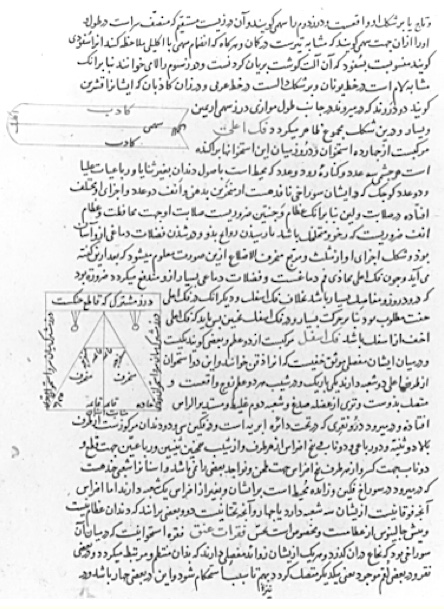 Diagrams of cranial sutures (above) and the bones of the upper jaw. The Anatomy of the Human Body (Tashrih-i badan-i insan) written in Persian at the end of the 14th century by Mansur ibn Ilyas. https://www.nlm.nih.gov/exhibition/islamic_medical/islamic_10.html
Diagrams of cranial sutures (above) and the bones of the upper jaw. The Anatomy of the Human Body (Tashrih-i badan-i insan) written in Persian at the end of the 14th century by Mansur ibn Ilyas. https://www.nlm.nih.gov/exhibition/islamic_medical/islamic_10.html
Cataract surgery
Ali Ibn Isa’s Tazkira al-Kahhalain was in three volumes, first volume was on anatomy and physiology of the eye. Ammar bin Ali al-Mosuli (d.1010 Cairo) developed a hollow syringe to remove cataracts via suction; the technique has improved with time, but the basic premise of the procedure remains sound to this day. He performed the earliest extraction of cataracts using suction. It was not until the 18thcentury that the removal of cataract by a hollow needle was employed in Europe He described six types of cataract operations. He explained 48 eye ailments, narrated some clinical cases, recorded his personal observations, and told about surgical instruments. The surgical instruments and the procedure used in modern cataract surgery are very similar to those invented by al-Mosuli. Historian of Science George Sarton has described al-Mosuli as the pre-eminent eye doctor among all the Muslim ophthalmologists.
In his book Kitab al-Manazir (Book on Optics), ibn al-Haitham gave diagrams of the eyes and related nerves. He perceived vision as occurring when a ‘form’ capable of representing an object’s visible features enters through the pupil and proceeds to the brain, where the faculty of sense completes the eye. [12]
Six intrinsic muscles of the eye (inside the eyeball) were first described by Ibn Sena. And they are: Lateral rectus – rotates the eyeball outwards, Medial rectus – rotates the eyeball inwards, Superior rectus – rotates the eyeball upwards, Inferior rectus – rotates the eyeball downwards, Inferior oblique – rotates the eyeball upwards and outwards nerve, Inferior oblique – rotates the eyeball downwards and outwards-
During the reign of Sultan al-Malik al-Nasir Salah al-Din (r.1169-1193) a physician from Aleppo (Syria) al-Shayzari (1193) wrote a manual for the muhtasib in which he discussed how to supervise the medical community. For surgeons (al-Jarahiyun) al-Shayzari stated: “they must know tashrih and the parts of the human body, and the muscles, the veins, arteries and nerves in them so that they will avoid them when opening abscesses or excising hemorrhoids” [13]
Abul Majd Baidhawi (Abd al-Majid) was an eminent physician in so far as the anatomy/dissection is concerned. His Mukhtasir dar Ilm Tashrihconsists of six chapters- bones, nerves, arteries and muscles, and skin. It has many colored illustrations. It was composed sometime after 1288. The manuscript is in the British Museum, London. It was edited by Dr. Syed Hussain Rizvi published in Tehran in 2007. [14]
Andalusian physician Ibn Zuhr (Avenzoar 1094-1162) is rumored to have dissected cadavers to add to the knowledge of anatomy described by the Persian physician al-Razi and al-Zahrawi. He continued al-Razi’s practice of testing new remedies on animals; he was the first one to who described parasites and the diseases they cause. He formalized the practice of tracheotomies, an incision in the windpipe made to relieve an obstruction to breathing. He developed his tracheotomy technique on goats before testing on humans. He performed autopsies on sheep that had died of diseases of the lungs. He was a strong supporter of supervised training program for future physicians like today’s internship program. [15]
In his “Taysīr fī al-mudāwāt wa al-tadbīr (“Practical Manual of Treatments and Diet”), later translated into Hebrew and Latin, ibn Zuhr described serious pericarditis (inflammation of the membranous sac surrounding the heart) and mediastinal abscesses (affecting the organs and tissues in the thoracic cavity above the diaphragm, excluding the lungs) and outlined surgical procedures for tracheotomy, excision of cataracts, and removal of kidney stones. “ [16]
Mansur ibn Ilyas (Shiraz Iran 1390) was the first Muslim physician to publish a colored atlas of the human body (Tashrih badn Insan). Over 70 sets of the Islamic full-page anatomical diagrams survive, of which about two-thirds are associated with copies of the treatise by Manṣūr ibn Ilyās.
India
The healing art reached its zenith during the reign of Mughal Emperor Shah Jahan (d1658). He was a rare embodiment of statesman and a scientist. During this period Hakim Nur al-Din Abdullah (Masih al-Zaman) who excelled in surgery, compiled a magnificent treatise in 1645 called Tibbey Dara Shikohi. It deals with bathing, vein section, cupping, cauterization, and the use of leaches. Three portraits were given in which body parts were shown clearly. [17] (Crown Prince Dara Shikoh was the son of Shah Jahan, killed by his brother Aurangzeb. He was enamored by medical sciences, having a large library containing medical books.)
Postmortem autopsy
Abd al-Latif al-Baghdadi (1231) was a versatile scholar, physician, and scientist. Al-Baghdadi wrote that during the famine in Egypt in (1200 AD), he had the opportunity to observe and examine more than 2000 skulls piled up. He examined them and established that the mandible consists of one piece, not two as Galen had taught.This was one of the earliest examples of a postmortem autopsy, through which he discovered that Galen was incorrect regarding the formation of the bones of the lower jaw and the sacrum. The Arabic manuscript was discovered in 1665 by Edward Pococke, the orientalist, and preserved in the Bodleian Library, Oxford. He introduced a more modern use for medicinal leech, stating that leech could be used for cleaning the tissues after surgical operations. (Wikipedia) The sacrum consists of 5 bones that are fused together. His discovery was ignored because it was published in a book about the geography of Egypt and the fact medical establishment was not ready to accept observation over ancient authority.
Ibn al-Quff (1286) composed Kitāb al-ʻUmda fi ‘l-Jirāḥa (Basics in the art of surgery) covering anatomy, drugs therapy, surgical care, wounds and tumors. This work was published in two volumes in Hyderabad, India in 1937. First and second discourse in volume I is on anatomy/dissection. He assumed the existence of capillaries. Explaining the connection between arteries and veins, he says: “the arteries are situated close to the veins because they depend on each other. This is so because they are connected to each other so that the veins may receive warmth from the arteries in order for the content of the veins to be cooked as well as the spirit of life which spreads about in the veins with their content. On their part the arteries receive from the veins the fine and vaporous components of the blood. This occurs through the pores, which communicate from the one to the others (from arteries to the veins) and cannot be seen by the senses” (Kitab al-Umda I, 53, 15-19- Quoted in Manfred Ullman, Die Medizin im Islam, Leiden, E.J. Brill, 1970, page 177). [18]
Mansur bin Muhammad (Shiraz) composed a book in 1396 Kitab al-tashrih – dissection which was decorated with colored diagrams. Prof E. G. Brown states: The anatomical diagrams contained have especially attracted the attention of Dr. Karl Sudhoff, who published them from the India Office MS in Studien zur geschichte der Medizin. (Leipzig 1908), and who has suggested that they represent an ancient tradition going back, perhaps, to the Alexandrian school. “ [19] Imad al-Din Mahmud composed Shirazi Sharh Tashrih al-Qanun in 1565. A two-volume set is in Raza Library Rampur, India dated 1576. Daud Antaki’s treatise risala fee al-tashrih al-Uzam is worth mentioning.
Note: From here onward most of the information has been culled from The Different Aspects of Islamic Culture, Volume 4, Science, and Technology in Islam. Editor: Prof. A.Y. al-Hassan, UNESCO, Publishing Beirut, 2001. I borrowed this book from Richmond Hill Central Library, Richmond Hill (Toronto), Canada.
Al-Zahrawai
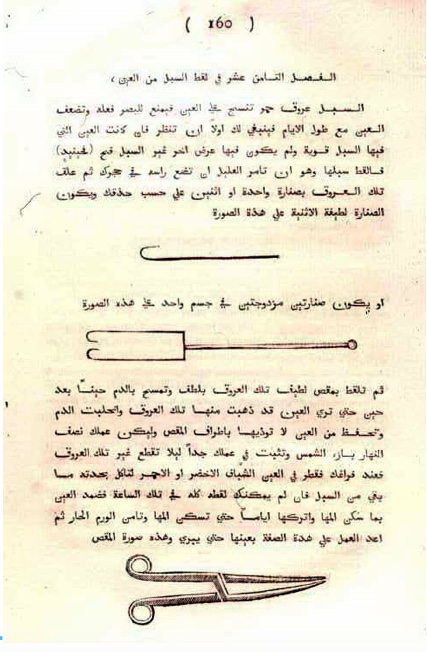 Extract from the Arabic text published in De chirurgia. Arabice et Latine, cura Johannis Channing, natu etr civitate Londinensis (Oxford, 1778). This book contains the surgical section of Al-Tasrif, the first rational, complete, and illustrated treatise on surgery and surgical instruments. The surgical portion of Al-Tasrif was published separately and became the first independent illustrated work on the subject. It contained illustrations of a remarkable array of surgical instruments and described operations of fractures, dislocations, bladder stones, gangrene, and other conditions. It replaced Paul of Aegina’s Epitome as a standard work and remained the most used textbook of surgery for nearly 500 years. (Source)
Extract from the Arabic text published in De chirurgia. Arabice et Latine, cura Johannis Channing, natu etr civitate Londinensis (Oxford, 1778). This book contains the surgical section of Al-Tasrif, the first rational, complete, and illustrated treatise on surgery and surgical instruments. The surgical portion of Al-Tasrif was published separately and became the first independent illustrated work on the subject. It contained illustrations of a remarkable array of surgical instruments and described operations of fractures, dislocations, bladder stones, gangrene, and other conditions. It replaced Paul of Aegina’s Epitome as a standard work and remained the most used textbook of surgery for nearly 500 years. (Source)
In the Introduction to Kitab al-Tasrif, [20] al-Zahwari details the following principles for the art of surgery:
“The art of medicine is long, and he who wishes to learn it must first practice anatomy, as described by Galen, so as to acquaint himself with the uses of the organs, their morphology and temperaments, and how they are joined and maybe disjoined. He should also be acquainted with the bones, tendons, and muscles, their numbers, and position… Hence the statement of Hippocrates that, “doctors are numerous, only in name, but actually they are few in number, particularly the surgeons… Thus he who does not know as much anatomy as we have mentioned is bound to fall into the error which could result in the death of many of his patients. I saw an ignorant doctor who incised a scrofulous tumor in the neck of a woman. He severed some arteries in the neck, thus causing hemorrhage, which continued until she died in his hands… Wherefore, my sons, you must know that there are two categories of surgical treatment: one is safe to practice, the other is mostly fraught with danger”. [21] Al-Zahrawi (d1013) discussed brain surgery in great detail, giving parts of the brain, how to make a hole in the skull. He described neurological complications resulting from fracture of the skull, the spinal column.
Ibn Rushd said that: “the process of imagining, thinking, and remembering takes place in the brain”. [22]
Al-Zahrawi – list of Firsts to his name
The first one to use catgut[23] for internal stitching, introduced surgical treatment for sagging breasts, a bone replacement for lost teeth, the first one to use cotton to control bleeding, performed tracheotomy, used plaster casts, used a fine drill for stones in the urethra inserted through urinary passages, removed bladder stones after crushing them with an instrument, described how to remove a dead fetus, nose polyp removal, described how to remove urinary bladder stone in women and males, first one to wear a green gown for surgery, he designed and introduced vaginal specula. [24] Some have called Zahrawi a biomedical engineer.
Father of modern surgery, Zahrawi (1013) introduced new methods of treatment: ptosis (falling of upper eyelid) and its method of cure, removal of ranula (a type of mucocele found on the floor of the mouth) beneath the tongue, removal of a leech stuck in the throat, treatment of fracture of male and female private parts, hunchback, wounds of the neck, various pathological conditions affecting the adult uterus, and lithotomy incision in the female cases. [25]
He designed, made sketches, and used around 200 surgical instruments some of which are: Tongue depressor, tooth extractor, obstetric devices, forceps to extract dead fetus, hook to remove nasal polyps, to perform enemas, surgical knives and saws, scalpels, curettes, retractors, spoon, sounds, surgical hooks, rods, speculum, bone-saw, the syringe, lithotomy scalpel, & surgical needle. Four of these are still in use today 1000 years later: obstetrical forceps, an instrument to examine the inner ear and the urethra and to remove foreign bodies from the throat. Here is his description of the syringe:
“When there occurs an ulcer in the bladder, or there is a clot of blood or a deposit of pus in it, and you wish to instill into it lotions and medicaments, this is done with the help of an instrument called a syringe. It is made of silver or ivory, hollow, with a fine tube, fine as a probe… The hollow part containing the plunger is exactly the size to be closed by it, so that any liquid is drawn up with it when you pull it up; and when you press it down it is driven in a jet”. [26]
Statue of al-Zahrawi in Cordoba- there is a hotel called Hotel Albucasis.
There’s a street named after him ‘Calle Albucasis” in his hometown Cordoba. The home in which he lived (House No. 6) still exists on the street and has been carefully preserved by the Spanish Board of Tourism.
For anesthetics, Al-Zahrawi used an aesthetic sponge[27], soaked in a mixture of opium extract, belladonna, and hemlock, and left in the sun to dry. Before use, it was soaked in water and applied to the nose. It produced gentle sleep. He showed how the anatomy of surgery could be united and that surgery cannot advance without a good knowledge of anatomy.
Al-Zahrawi was likewise the first to in history to utilize cotton in surgical dressings in the control of discharge, as cushioning in the supporting of cracks, educate the lithotomy position for vaginal operations, to depict and utilize liquor as a surgical readiness. He recognized goiter and growth of the thyroid and clarified his creation of a closing up iron, which he likewise used to control dying. His depiction of varicose veins stripping, even following ten centuries, is verging on like current surgery. In orthopedic surgery, he presented what is called today Kocher’s technique for a decrease of shoulder disengagement and patellectomy, 1,000 years before Brooke reintroduced it in 1937. He depicted tracheotomy, orthodontia, and portrayed the distinctive sorts of crack before the presentation of X Rays.[28] American surgeon W.S. Halsted (1922) has opined that Zahrawi was the first surgeon to have done a thyroid operation.
The oldest medical manuscript is written in England
The oldest medical manuscript written in England around 1250 according to British Medical Journal has startling evidence in reference to Albucasis. This interesting relic consists of 89 leaves of volume, written in beautiful gothic script in the Latin tongue. The work contains six separate treatises, of which the first and the most important is the DE CHIRURGIA OF ALBU-MASIM (Albucasis, Albucasim). This occupies 44 leaves, three of which are missing, it may be contended that, if this really is the oldest extant medical textbook written in England”. Nova Vetera British Medical Journal July 8, 1939 pp 80-81
Forty-three plants were used as analgesics including Poppy (Khash Khash), mandragora, hemlock, henbane (bhang), Indian hemp (hashish).
Will Durant says about ibn Rushd: “His work in medicine (Kitab al-Kulliyat) has been almost forgotten due to his fame as a philosopher, one of the greatest physicians of his time, the first to explain the function of the retina, and that an attack of smallpox confers subsequent immunity”.[29]
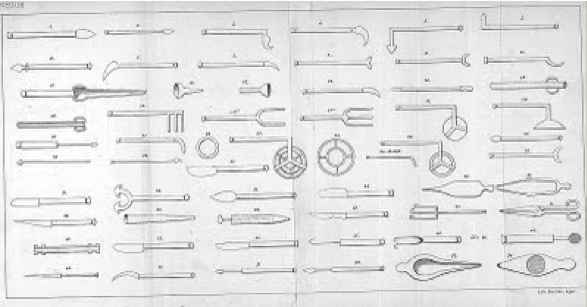 Surgical instruments by Zahrawi
Surgical instruments by Zahrawi
With respect to surgery of tonsillectomy, surgical instructions are found in all major books of medicine such as Ibn Sena’s Kitab al-Qanoon, Ali ibn Abbas Kamil al-San’a, Ibn al-Quff’s al-Umda fi sina’at aljiraha (Foundation of Surgery). Al-Zahrawai described and illustrated the tongue depressor which is shaped like a blade with two ends. It must be made of silver or copper and thin as the blade of a knife. A mouth gag is an iron ring as wide as the opening of the mouth. He described several types of hooks, single-pronged, two-pronged, and three-pronged and in three sizes-small, medium, and large.
Ibn Sina devoted a chapter in his book to post-tonsillectomy maladies: change in the voice, the descending syndrome, patient’s exposure to respiratory infections. He says these are serious complications because they can cause death from the infection in the chest and kills him.
Hemostasis- (stoppage of bleeding)
Ligature (tying up or binding) al-Zahrawi says: “This is achieved by ligaturing the vessel with a strong ligature”. [30] Ibn al-Quff says: if an artery or vein be cut it must be uncovered and its lumen ligatured with a linen thread”. [31] Ibn Sina says: the (blood) vessel must be pulled with a hook, and then ligatured with linen thread. [32]
Hemostasis – by pressure
Al-Zahrawai states: if someone is unable to summon a doctor or lay hand on medicament, he has only press with his forefinger on the wound very hard, so as to compress the blood, and let it dry on top”. Ibn Sina gives an example: If the jugular vein is torn off, one must compress it with a finger, then one should apply the necessary medications and dressing’.
Anatomy
Ibn al-Nafis (1288) composed a commentary on the anatomical portions of Kitab al-Qanun in which he stated that the blood in the right ventricle of the heart must reach the left ventricle by way of the lungs. In his own words: “the material of which heart is made is impermeable, and no blood can pass through its surface. Therefore this must pass by way of the lungs” [33] This formulation of the pulmonary circulation was made three centuries before Michael Servetus (d. 1553) and Colombo (d. 1559), the first Europeans to describe the pulmonary circulation of blood.
Yusuf ibn Ilyas Shirazi’s illustrated treatise, often called `Mansur’s Anatomy,’ was dedicated to a grandson of Timur (Tamerlane) who ruled the province of Fars from 1394 to 1409. It consists of an introduction followed by 5 chapters on the 5 `systems’ of the body: bones, nerves, muscles, veins, and arteries, each illustrated with a full-page diagram. A concluding section on compound organs, such as the heart and brain, and on the formation of the fetus, was illustrated with a diagram showing a pregnant woman. [34]
Cauterization was by two methods by using caustics and using fire. al-Zahrawi described in precise detail all the instruments and techniques used for this purpose. Al-Zahrawai preferred cauterization with wooden handles. One of his techniques states: clean the area to be cauterized by shaving the hair, mark with ink the points to be cauterized, heat the cautery, put it on the area leave it there for a while then turn it and take it off again quickly.
Tamponing – Ibn Sina says: you take a tuft of cotton wool or old linen cloth and sprinkle it with sticky medicaments that prevent the blood (flowing), and you push it into the lumen of the artery like a stopper, and then bandage it tightly.
Cooling – ibn Sina defines it as ‘being something very cold that you pile up until the blood clots in the lumen of the artery. Stopping blood with an ice bag is a modern version of this treatment.
In the chapter ‘of wounds and the flow of blood,’ ibn Sina gives 8 ways of stopping the flow of blood, five of which are: by suture, by wicks, by the total incision of the vein, ligature of the vein, and scorching (burning).
It is rather surprising to see ‘ligature of arteries’ attributed to Ambroise Pare and L. Bertapaglia. On the medications that can stop bleeding, French surgeon Guy de Chauliac (1368) gives names of Ibn Sina, Abulcasis, and Abu al- Abbas. In his book La Grande Chirurgie, Chauliac cites Arabic authors many times throughout the book.
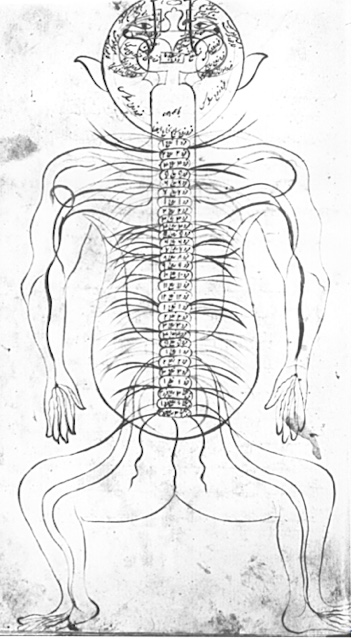 https://www.nlm.nih.gov/hmd/arabic/images/p1913a.jpg. An undated and unsigned copy, probably 15th or early 16th-century.
https://www.nlm.nih.gov/hmd/arabic/images/p1913a.jpg. An undated and unsigned copy, probably 15th or early 16th-century.
Nose Fracture
Ibn Sina says: If the nose is broken and not looked after, this is the way to a nasal obstruction, which becomes consolidated, and the nose becomes deformed and cannot be set. Hence it must be reset on the first day, and no later than the 10th. Know well that when the bones of the nose are broken, the best course is to take a really suitable metal tube, smooth and pass it gently up the nose all the way. (al-Qanun III).
In the fourth book of al-Qanun, ibn Sina under the heading ‘fourth article of the separation of the nerve’ describes the end-to-end suture of the nerve. And if the wound in the nerve is in the width, the treatment is only by suture. Guy de Chauliac spread this method in France, Switzerland, and the old World.
Wounds of abdomen
Al-Razi described suturing wounds of the abdomen. “If the abdominal wall is pierced through so that the organs come out, it is necessary to know how to gather up the intestine and put them in, … if the wound has injured the intestine or gone through it, the small ones are easier to heal than the large ones. [35]
In his book Kitab al-Shamil, ibn Nafis says the success of the surgical operation has three periods: the stage of handing oneself over to the surgeon, the stage of action, and the stage of preservation i.e. post-operative stage.
Treatment of aneurysm
Ali ibn Abbas describes the treatment of aneurysm in his Kamil al-sina’a: First, you must incise the skin longitudinally and take out all the blood there is in this place. You must uncover the artery and strip it of all the bodies that surround it; then you pick up the artery with a hook , you take a needle and thread and slide it underneath one of the two ends of the artery, tie it, and then cut the thread, and do the same on the other side.[36]
Cosmetic surgery
Al-Razi says in Kitab al-Hawi: For a fibromatous swelling which makes an organ smaller, like a lip, the nose or the ear, one should incise in the middle, peel back the skin on both sides (of the incision) and cut the flesh that is in the middle, which is hard, and throw it away, then join the skin by sutures without removing any of it. In this way, the organ resumes its normal size. [37]
The statue of Razi in the “Scholars Pavilion” in the United Nations Office in Vienna (Wikipedia)
Plastic Surgery
Al-Razi says: “Partial loss of lips and nose: this occurs due to the presence of such thick hard flesh that it lifts the skin and leaves the whole organ short. It occurs in the lip, the near and the nose. Peel the middle part, scrape the skin on the two sides and cut the flesh in the middle where you had scraped the solid tissue and throw it away. Delineate the skin without any contraction and attach it. The organ will then go back to its original length due to the disappearance of the tissue cut from the center of the skin. (al-Hawi V, 218)
Infectious diseases
The infectious nature of the disease was not discussed because of their limited knowledge of bacteriology. However, some writers did discuss contagious diseases afflicting children.
Measles and Smallpox: Al-Razi was the first physician in medical history to distinguish between measles and smallpox. His epoch-making medical work al-Judri wal-hasba (A treatise on the Smallpox and Measles) was translated into English by W.A. Greenhill and published in London 1847.
- False ‘smallpox’ (chickenpox – Humayqa) al-Baladi was the first person to give a description of chickenpox. He distinguished it from smallpox and measles.
- Infantile paralysis: al-Razi’s medical writings make references to this disease and its natural treatments.
- Tetanus: There are references in the books of al-Tabari, al-Razi and Ibn Sina.
- Leprosy (judham) Ibn Masawayh was the first to give its description.
- Tuberculosis: Ibn Sina gave a description of those susceptible to tuberculosis. As a clinical observer, Al-Razi notices clubbing in cases of tuberculosis.
- Plague: Ibn al-Khatib al-Gharnati describes the infection of the plague in Granada in 1348. Ibn al-Khatima al-Marrakushi wrote a treatise on the plague which devastated Almeria in 1349.
- Rabies/ hydrophobia: Many Muslim physicians like al-Razi, Ali Abbas, Ibn Sina, Ibn al-Nafis, described it precisely. Rabies was transmitted from the sick dog to healthy dogs and to human beings.
- Conjunctivitis: al-Hariri was the first person to affirm the contagious nature of this disease.
Hereditary disease
Ibn Sina gave a summary of congenital diseases ( a) diseases of the form(b) diseases of the tracts (c) diseases of the vessels and cavities (d) diseases of the surfaces of the organs e) diseases of the glands, increase or decrease. He described major deformities: cleft lip, tied tongue, blocked ears, deformity of the fingers, imperforate anus, blockage of urinary passage, congenital diseases of the eye (squint, blocking of tear ducts).
Ibn Sina attributes causes for deformities in human limbs to changes in the semen of the male. He says “ The imitative faculty in the semen of the male tends to reproduce the likeness of that from which it originated, unless an impediment opposes it. (Qanun, II, 534)
Surgery for congenital deformities
Siamese Twins: if the join was simple, Muslim surgeons undertook the operation.
Cleft lip: al-Razi refers to cosmetic surgery as a branch of surgery, severing of the tied tongue, and blocked ears.
Finger deformities: surgeons performed an operation to remove the extra finger, or divide the join fingers.
Shortness of eyelid called ectropion.
General surgery:
Circumcision of boys, hydrocele, stones in infants, hernia, & warts.
Surgery of head, neck, and vertebrae:
Removal of bone stuck in the throat, enlargement of cervical lymph nodes, tuberculosis of vertebrae.
Neurological illnesses
Al-Razi described in the first part of al-Hawi illnesses relating to the head like hemiplegia, apoplexy, tremors, motor and sensory disorders, including torpor, lethargy, and melancholy. He analyzed brain faculties like imagination and memory and what distorts vision. He wrote treatises on neurological illnesses including Bell’s (facial) palsy, hemiplegia, & sexuality. [38]
Ibn Sina saw the human body subjected to thought and imagination. He suggested exercise for the maintenance of mental health. He said music has beneficial to the human soul.
Psychological treatment
Zakariya al-Razi employed psychological treatments in healing his patients. He also suggested that psychological factors can cause illness. He preferred to the power of nature & foodstuffs than drugs to cure the disease. The second treatise of his Kitab al-Mansuri is on physiognomy. His book on principles of physiognomy was published from Aleppo in 1929.
Arabian anatomy had a significant impact on European anatomy until the time of Deutch anatomist Vasalius (1564) whose writings were replete with Arabic terminology. Dissection was carried out at the University of Bologna during the 14th century in order to verify anatomical descriptions of Ibn Sina. Arabic terminology was used in Europe during the Middle Ages, some still persist in Latinized translations until today i.e. nucha, dura mater, pia mater, retina, saphenous.
Fifteenth-century Turkish surgical monograph Kitab-i-djarrahnama by an unknown writer, Tarcama i hulasa
fennil ciraha by Djarrah Mesud, and Alaim-i-djarrahin by Ibrahim b. Abdallah are also noteworthy.
Bibliography
- Hakim Syed Zillur Rahman, Tarikh Ilm Tashrih, Aligarh 1967
- G. Browne, Arabian Medicine, New Delhi, reprint 2003
- Syed Hossein Nasr, Science, and Civilization in Islam, Cambridge, 1987
- Zakaria Virk, 111 Muslim Scientists (Urdu) Benaras, India 2014
- A.Y. Al-Hassan, Science and Technology in Islam, UNESCO, Beirut 2001
- Turner, Science in Medieval Islam, Austin, Texas, USA 1995
- Jim al-Khalili, The House of Wisdom, Penguin, London 2010
- A Tribute to al-Razi. http://www.ams.ac.ir/AIM/NEWPUB/08/11/6/0019.pdf
- Islamic Medical manuscripts: https://www.nlm.nih.gov/hmd/arabic/abbreviation.html
Suggested reading: Sami I. Haddad, History Arab Medicine, Beirut, 1975, Cyril Elgood, Medical History of Persia, http://archive.aramcoworld.com/issue/199703/the.arab.roots.of.european.medicine.htm
The final page of the Hawi by al-Rāzī (Rhazes), with the colophon in which the unnamed scribe gives the date he completed the copy as Friday, the 19th of Dhu al-Qa‘dah in the year 487 [= 30 November 1094]. It is the oldest volume in the National Library of Medicine and the third oldest Arabic medical manuscript known to be preserved today. (Courtesy National Library of Medicine, USA)
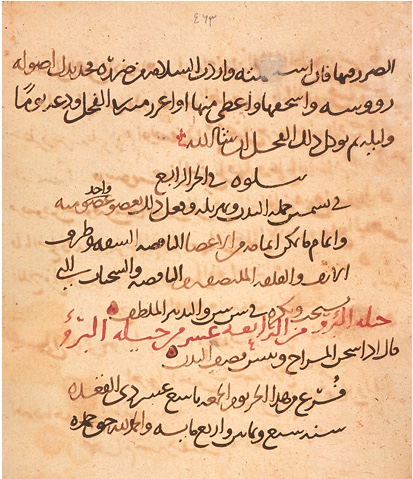 The final page of the Hawi by al-Rāzī (Rhazes), with the colophon in which the unnamed scribe gives the date he completed the copy as Friday, the 19th of Dhu al-Qa‘dah in the year 487 [= 30 November 1094]. It is the oldest volume in the National Library of Medicine and the third oldest Arabic medical manuscript known to be preserved today. (Courtesy National Library of Medicine, USA) MS A 26.1, fol. 1a
The final page of the Hawi by al-Rāzī (Rhazes), with the colophon in which the unnamed scribe gives the date he completed the copy as Friday, the 19th of Dhu al-Qa‘dah in the year 487 [= 30 November 1094]. It is the oldest volume in the National Library of Medicine and the third oldest Arabic medical manuscript known to be preserved today. (Courtesy National Library of Medicine, USA) MS A 26.1, fol. 1a
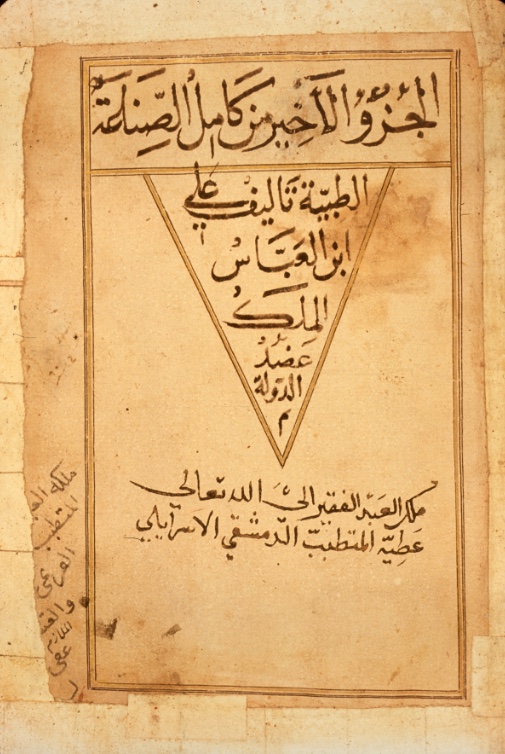 The Lst Book of the Medical Industry by Ali Ibn al-Abbas, Consult of the Country
The Lst Book of the Medical Industry by Ali Ibn al-Abbas, Consult of the Country
The original title page to this copy of al-Majusi‘s Complete Book of the Medical Art (Kitāb Kāmil al-ṣinā‘ah al-ṭibbīyah) has had a piece of paper pasted over it. In this latter paper, the title and the author have been written within gold and black frames, very similar to those found at the beginning of the text itself. Beneath the title and the author, and written in the same hand, is an owner’s note reading: “Property of the poor servant of God, ‘Aṭīyah al-mutaṭabbib al-Dimashqī al-Isrā’īlī” –that is, ‘Aṭīyah the Jewish physician of Damascus. (Courtesy: National Library of Medicine, USA) https://www.nlm.nih.gov/hmd/arabic/E5_E6.html#E6
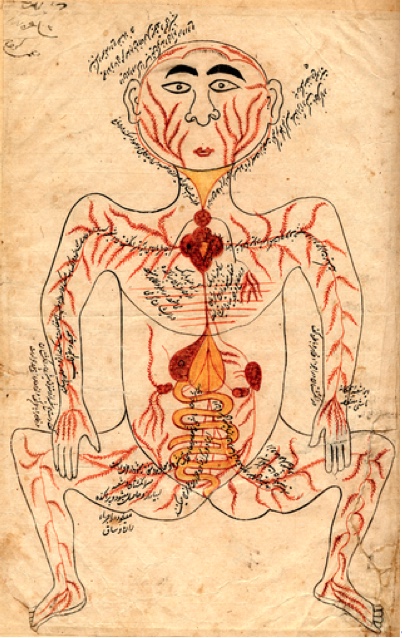 By Jtamad at English Wikipedia, CC BY-SA 3.0, https://commons.wikimedia.org/w/index.php?curid=6715845
By Jtamad at English Wikipedia, CC BY-SA 3.0, https://commons.wikimedia.org/w/index.php?curid=6715845
The venous system 15/16 the century https://www.nlm.nih.gov/hmd/arabic/images/p1916b.jpg
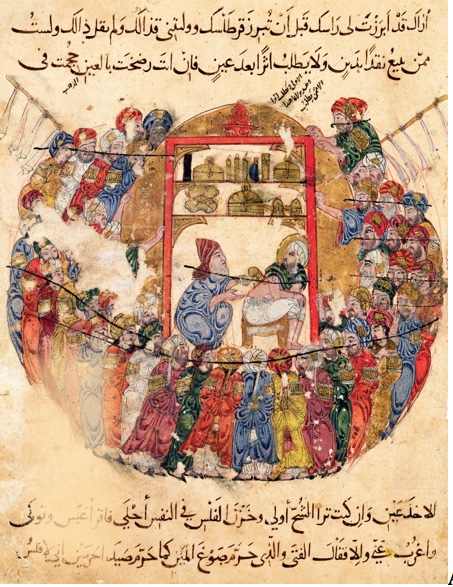 A doctor treats wounds, a 12th-century illustration
A doctor treats wounds, a 12th-century illustration
A doctor treats wounds, a 12th-century illustration
 Cauterization to treat toothache
Cauterization to treat toothache
Cauterization to treat toothache
[1] Ibn Sina asserted that resurrection was non-physical and that the body belongs to the realm of generation and corruption.
[2] E.G. Browne, Arabian Medicine, originally published 1921, reprint New Delhi, 2003, page 114
[3] E.G. Brown, Islamic Medicine, 2003, New Delhi, pp. 31 & 32.
[4] Canon of Medicine was one of the most important & popular of medieval books; it stayed in use in Europe through the 18th century.
[5] Ibn abi Usaybi’ah, Uyun al-anba, II page 75)
[6] Nasr, Science and Civilization, Cambridge, 1968, page 308
[7] Claude Field, the confessions of al-Ghazzali, London, 1909, page 25
[8] Nasr, Science, and Civilization in Islam, 1987, page 200.
[9] Kitab Al-Mansuri- French translation by de Koning, Bodleian Library, Oxford, Marsh collection
[10] http://apnaorg.com/books/english/muslim-contributions-to-science/muslim-contributions-to-science.pdf
[11] E.G. Browne, Islamic Medicine, New Delhi 2003, page 124
[12] Turner, Science in Medieval Islam, page 198.
[13] Emillie Savage-smith: https://www.academia.edu/6198626/Attitudes_Toward_Dissection_in_Medieval_Islam
[14] Dr. Zillur Rahman, Tarikh Ilm Tashrih, Aligarh 1967, pages 250/251
[15] Michael Morgan, Lost History, the Enduring Legacy of Muslim Thinkers, scientists and artists, Washington, 2007, page 206
[16] https://www.britannica.com/biography/Ibn-Zuhr
[17] Poonam Bala, Medicine, and medical policies in India, NY 2007, page 52
[18] Quoted in – Plinio Prioreschi, History of Medicine Byzantine and Islamic Medicine, USA, 2001, page 301
[19] E.G. Browne, Islamic Medicine, Goodword Books, Nizamudin Market, New Delhi, 1921, reprint 2003, page 93
[20] Khuda Baksch Library Patna has two manuscripts of al-Tasrif, dated 1710 and 1888. Arabic edition was published in Lucknow 1908
[21] M.S. Spink, Abulcasis: On Surgery and Instruments, London 1973 – Wellcome Institute for History of Medicine.
Available online: https://books.google.ca/books?id=mjVra87nRScC&pg=PR5&redir_esc=y#v=onepage&q&f=false
[22] Ibn Rushd, Kitab al-Kulliyat 1984. New Delhi
[23] a material used for the strings of some musical instruments, made of the dried twisted intestines of sheep or horses (but not cats). Catgut dissolves on their own over time. It is still used for stitches today.
[24] 1001 Inventions, pp 163 & 164 as quoted in Urdu book- 111 Muslim scientists, Z. Virk, Benaras, India 2014 page 300
[25] Josef Meri, Medieval Islamic Civilization, Routledge, NY, 2006, page 783 books.google.ca
[26] M.S. Pink, Abulcasis, On surgery and instruments, London, 1973, page 8. Quoted in al-Khalili, House of Wisdom, page 198
[27] In the Christian world, anesthesia use was objected on religious grounds… pain was a visitation from God, and any interference with this was sacrilege. (Paul Strathern, Medicine from Hippocrates to Gene Therapy, NY 2005, page 237) in the early period, Islam people believed prayer could heal, but nowadays Muslims get modern medical treatments with prayer as they complemented each other.
[28] http://abceioakjoi.blogspot.ca/2016/09/al-zahrawi-was-likewise-first-to-in.html
[29] Durant, History of Western Philosophy, page 419
[30] Zahrawi, On Surgery and Instruments, page 462
[31] Al-Umda fil Jiraha, Hyderabad, page 97
[32] Ibn Sina, Al-Qanun, page 106
[33] Paul Strathern, Medicine – from Hippocrates to Gene Therapy, NY 2005, page 115
[34] https://www.nlm.nih.gov/exhibition/islamic_medical/islamic_10.html
[35] Kitab al-Hawi, Hyderabad, page 205
[36] Kamil al-sina’a, page 193
[37] Kitab al-Hawi, page 218
[38] Kamil Husayn, Tibb al-Razi, Cairo, 1977 pp. 33-94
Recommended Posts
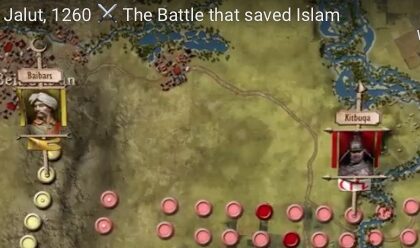
Islam Saved Europe Twice
November 17, 2023
الميزان المفقود
February 8, 2023
صُلح الحديبية – سُنَّة جَلية وفَتحٌ الهي
January 26, 2023


